Sacramento Street Playground
Tuesday, December 5th, 2017 @ 12:38 pm
black, cambridge, locust, log, mitch, park, playground, ryerson, summer, woodworking
This past summer, I had the privilege of working with Mitch Ryerson again on two of his playground projects for the Boston area. First up, we built this one in Cambridge, between Harvard and Porter Squares, tucked away off Sacramento St in a new park that’s opening up next year. It’s always a fun challenge working on these projects with Mitch, and I love the approach. Letting the material’s shape and character dictate much of the design, while obviously sticking to something of the plan we set out with, seems the most appropriate way to me of working with such a vibrant and strong material. And Mitch rolls with each new challenge and setback, and we always find a way. Something I’ve learned about making things is that there’s always more than a few ways to get there, and there’s always a bunch of ways to fix something. And most often, it works out great.

Debarking and smoothing, out by the beaver pond.
Oftentimes we’ll head out west to his property in the country to prep the logs, removing the bark and sanding down all of their knots and nubs, anything pokey or likely to splinter, and refining the shapes of some of them to the shapes we know we need. It’s messy work, but being out there in the field, with the beaver pond nearby and hearing the birds when we have the machines off for a break, it replenishes my need for some rural quiet experience. It’s a sort of treat to head out there when we need to.

Cutting some mortises with a borrowed tool.
For this project, we decided to try a power tool for the mortises. This is a chain mortiser we borrowed from a friend of Mitch’s, and it sped up the process of cutting those pockets like you wouldn’t believe. I’ve used these before on various timberframe projects, but never in this type of application. We came up with this system of screwing boards to the side of the logs, once we’d aligned everything and figured the angles of the mortises as best we could, and then plunged in with the miniature chainsaw on the machine. And it powered through them. Typically cutting mortises in soft pine, it had a tough time with the dense, hard black locust, but it did alright. And we certainly appreciated the modern approach.

Scribing the rest of the joinery.
After the holes were cut, we started the tenons, and got them close to length, and then scribed the shoulders to match the shape of the log they were inserted into. These were a bit loose, but they got epoxied and pinned in the end, so the structured is very sturdy and secure. It’s tough to make exact joints in stuff like this! Especially with such cumbersome pieces and only two of us to hold and mark and move them around. But we made out alright, and the thing came together nicely.
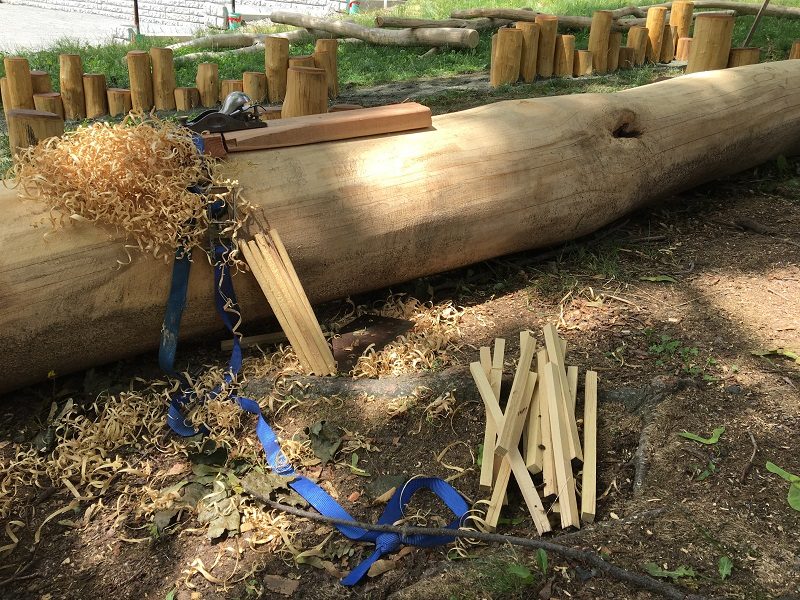
Shaving down some pegs for the joints.
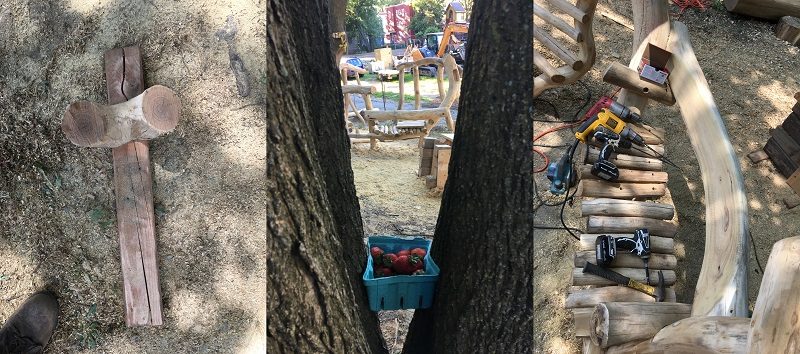
Snacks are always necessary.
Once we got the main members in the ground and connected to each other, we started filling in the spaces between with some benches, countertops, and shelving. Sort of a little country kitchen on the edge of this new soccer field and community garden, it turned into a cozy little nook of a playground. Should be equally comfortable for kids to hang on and climb, and for adults to sit and watch the activity. Just what you want in a park.
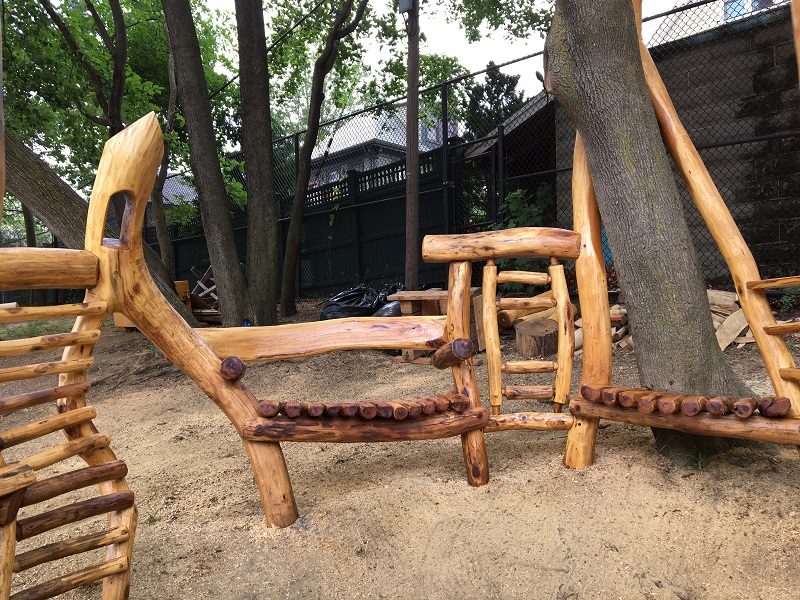
Plenty of seating…
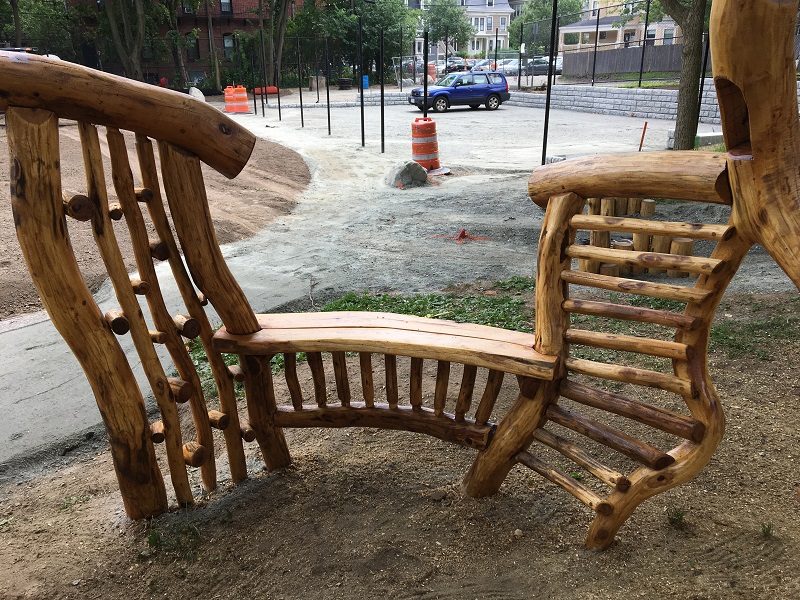
…and a counter to rest your things.
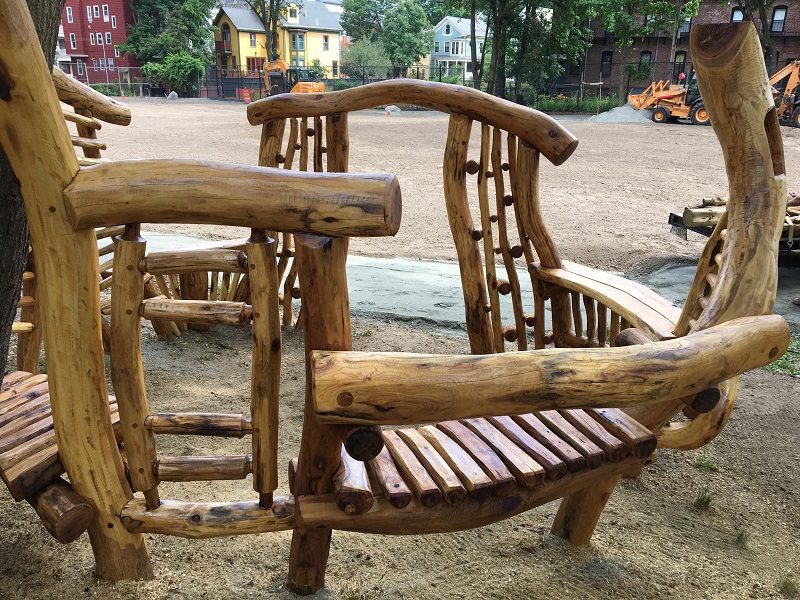
Some patterns in the doorway…

…and some birdhouses for the other visitors. They’ll get shingle roofs eventually.
Comments
Thoughts on the stuff you read? You can leave a response, or trackback from your own site.
Leave a Reply